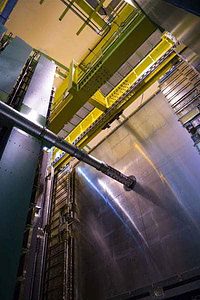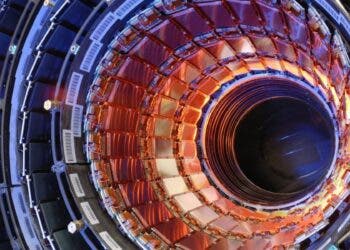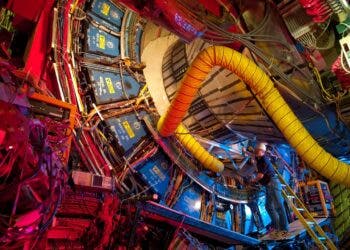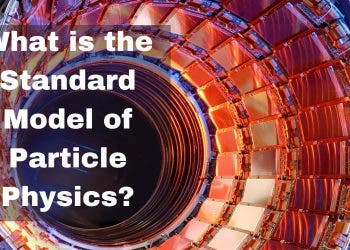Once with the discovery and confirmation of the Higgs boson, the Large Hadron Collider in Geneva proved its money worth and garnered international appraise. Despite the LHC is currently shutdown for its periodical maintenance (the restart procedure is well underway, with the particle accelerator expected to become fully operational again in 2015), physicists aren’t slaking. The data gathered from experiments performed at the LHC is enough to keep scientists busy for years to come. For instance, the LHCb collaboration, who run one of four large experiments at the LHC, confirms the existence of a new exotic particle, first discovered in Japan a few years ago.
At the turn of the last century, things were much simpler for the lives of physicists. We knew all matter is comprised of molecules and atoms, which at their own turn are comprised of a nuclear core (made up of protons and neutrons) and an orbiting electron shell. Physics has long evolved past this basic knowledge however, once with quantum field theory. Following the first particle colliders, both in space and on Earth, physicists have found that particles are comprised of a number of truly elementary subparticles, like quarks, leptons or bosons. Then there’s a slew of so-called hypothetical subparticles predicted by supersymmetry, but as of yet unconfirmed.
Exotic hadron

In 2008 the Belle Collaboration in Japan reported the observation of a new exotic particle, the Z(4430)– (of negative charge). The initial readings suggested that the particle has a mass that puts it in a dense forest of charmonium states (particles made up of specific quarks like charm quark and charm antiquark), yet all particles in this state have a neutral charge.
This is where the LHC step in to elucidate. Researchers here performed more than 180 trillion collisions resulting in 25,000 decays of mesons (quarks paired with antiquarks). After finally shifting through all the date, researchers have announced recently that the existence of Z(4430)– with extremely high confidence: significance of 13.9 sigma, well above the usual 5 sigma threshold required to declare a discovery. The LHCb didn’t just confirm the particle, however, it went on to characterize its state – spin and polarity.
“The significance of the Z (4430) signal is overwhelming – at least 13.9 sigma – confirming the existence of this state,” says LHCb spokesperson Pierluigi Campana. “The LHCb analysis establishes the resonant nature of the observed structure, proving that this is really a particle, and not some special feature of the data.”
Now that the Z(4430)– particle has been confirmed by two independent experiments, physicists can concentrate on unraveling its nature. For instance, it’s believed the particle is the firmest evidence yet of a tetraquark – a four-quark state. LHC physicists believe the particle is most likely to be made of a charm, anti-charm, down and anti-up quark. A truly exotic particle, Z(4430)– isn’t likely to be alone. No doubt more similar findings will come off the LHC project, once it goes back online.
The findings were reported in a paper published in the journal Physical Review Letters.






